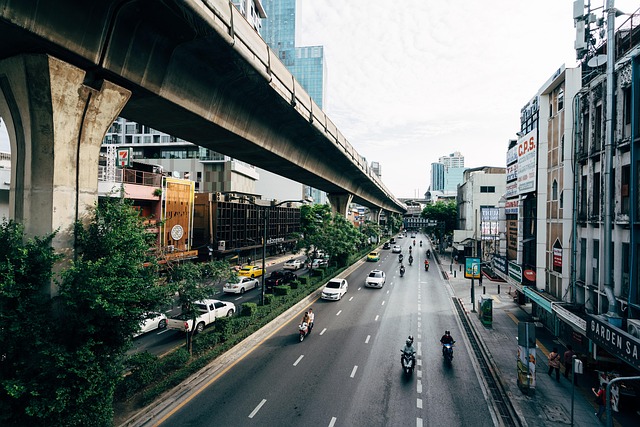The Role of Pincodes in India’s Logistics and Supply Chain

Meta Description
Explore how PIN codes play a critical role in India’s logistics and supply chain systems. From enabling last-mile delivery to driving digital logistics, understand their impact in a 4000+ word deep-dive.
Introduction
In the vast and diverse country of India, the seamless movement of goods is essential for economic growth, customer satisfaction, and overall connectivity. At the heart of this complex web lies a simple, yet incredibly powerful tool the PIN code, short for Postal Index Number. Introduced in 1972, the six-digit PIN code has grown from a postal sorting tool to a backbone of the logistics and supply chain industry in India.
This article explores the role of PIN codes in India’s logistics and supply chain management, covering historical context, structural relevance, operational efficiency, challenges, technological integration, and future prospects. From e-commerce giants to rural delivery networks, the PIN code remains a fundamental pillar of India’s logistical evolution.
1. Understanding PIN Codes in India
1.1 What is a PIN Code?
A PIN code is a six-digit numerical code used by India Post and other logistics providers to identify specific geographic regions for mail and parcel delivery. Each digit in the code has a purpose:
- 1st digit: Denotes the zone
- 2nd digit: Denotes the sub-zone
- 3rd digit: Denotes the sorting district
- Last 3 digits: Identify the individual post office
1.2 Origin and Evolution
The system was introduced by Shriram Bhikaji Velankar on August 15, 1972, to streamline the sorting and delivery of postal items. At that time, India faced challenges with similar place names, language barriers, and manual sorting inefficiencies. The introduction of PIN codes revolutionized mail delivery.
1.3 Structure of the PIN Code Network
India is divided into 9 PIN zones:
- Zones 1-8 represent different geographical areas
- Zone 9 is reserved for the Indian Armed Forces
With over 1.5 lakh post offices across India, this massive network forms the structural bedrock of Indian logistics.
2. Role of PIN Codes in Logistics and Supply Chain
2.1 Efficient Sorting and Routing
PIN codes enable automatic sorting of parcels and letters using advanced mail sorting machines. This reduces human error and speeds up the process.
2.2 Optimizing Delivery Routes
Logistics companies use PIN codes to segment regions and plan delivery routes. It allows:
- Efficient fleet management
- Zone-based warehouse allocations
- Route optimization
2.3 Reducing Delivery Times
Faster delivery is critical in today’s on-demand economy. By identifying the exact area and delivery post office, PIN codes help logistics providers reduce time spent locating addresses.
2.4 Enabling Last-Mile Delivery
In India, last-mile delivery is a massive challenge due to dense urban areas and remote rural regions. PIN codes help bridge this gap by providing structured area identification.
2.5 Critical for Reverse Logistics
Returns and replacements in e-commerce heavily depend on reverse logistics. The PIN code system aids in tracking returned items and routing them back to warehouses efficiently.
3. PIN Codes in the E-commerce Era
3.1 E-commerce Expansion
India’s e-commerce market is expected to grow to over $200 billion by 2026. Every online order depends on the accuracy and presence of a valid PIN code.
3.2 Serviceability Mapping
E-commerce companies use PIN codes to define serviceable areas. This influences:
- Cash on delivery availability
- Estimated delivery dates
- Courier partner selection
3.3 Hyperlocal Deliveries
With the rise of 10-minute grocery and food delivery services, businesses are narrowing down service areas based on micro-clusters of PIN codes.
3.4 Fraud Prevention
Using PIN codes, companies can cross-verify delivery addresses and avoid fraudulent transactions by comparing with verified zones.
4. Integration with Technology and Data
4.1 Geolocation APIs
Modern logistics apps integrate with geolocation APIs that use PIN codes to fetch coordinates and assist in real-time navigation.
4.2 Machine Learning and Data Analytics
Businesses use PIN code data to:
- Predict delivery times
- Forecast demand
- Optimize warehouse locations
4.3 AI-Based Address Verification
Startups and large enterprises use AI tools to validate addresses based on PIN codes and ensure accurate delivery.
4.4 Mapping Infrastructure
Several apps use PIN code overlays to identify areas lacking infrastructure or needing logistic support.
5. Challenges Associated with PIN Code Usage
5.1 Inaccurate or Outdated Data
- Many users input incorrect PINs during ordering
- Some newly developed areas are not yet mapped with specific PIN codes
5.2 Ambiguous Coverage
Some PIN codes cover large or overlapping regions, causing confusion in rural and semi-urban areas.
5.3 Over-Reliance on Manual Mapping
Though automation exists, many deliveries still rely on manual route planning which can lead to inefficiencies.
5.4 Postal Delays
The disparity between India Post and private courier services in certain PIN zones can cause bottlenecks.
6. Case Studies: PIN Codes in Action
6.1 Amazon India
Amazon has built its warehouse and logistics network across strategic PIN codes to ensure one-day and two-day delivery across metros and Tier-2 cities.
6.2 Indian Railways Parcel System
The Parcel Cargo Express Trains (PCET) use PIN code data to route cargo more efficiently.
6.3 Flipkart Ekart
Flipkart’s logistics arm, Ekart, uses AI-powered tools integrated with PIN code databases to streamline inventory management and delivery allocation.
6.4 India Post Digital Services
India Post is now offering digital parcel tracking, e-post services, and e-commerce delivery using its extensive PIN-based network.
7. Government and Policy Involvement
7.1 Digital India Mission
Under Digital India, initiatives aim to digitize and map all PIN code regions, creating a seamless logistics grid.
7.2 India Post Modernization
Programs to automate sorting centers and improve last-mile logistics are being implemented.
7.3 Addressing Infrastructure Gaps
Policy-makers are using PIN-based reports to identify underserved areas and propose development plans.
8. Future of PIN Codes in Logistics
8.1 PIN Code Level Precision in AI Routing
AI and IoT can predict traffic and route delays based on real-time PIN area conditions.
8.2 Smart Cities and PIN Data
Smart city projects will use geotagged PIN data for utilities, surveillance, waste management, and urban logistics.
8.3 Blockchain Integration
Blockchain can be integrated with PIN-based tracking systems for tamper-proof delivery and chain-of-custody tracking.
8.4 Dynamic PIN Systems
In the future, India might experiment with temporary or floating PIN codes for mobile delivery hubs and seasonal markets.
9. How Businesses Can Leverage PIN Codes
9.1 Customizing Delivery Models
- Offer different delivery options based on zone efficiency
- Enable or disable COD based on historical PIN code success rate
9.2 Marketing and Customer Insights
Use demographic data linked with PIN codes to personalize marketing efforts.
9.3 Franchise and Warehouse Expansion
Logistics expansion plans can be built using demand heatmaps created from PIN code activity.
9.4 Rural Penetration Planning
Target underdeveloped markets with micro-warehouse solutions using precise PIN targeting.
Conclusion
PIN codes, though simple in form, play a complex and crucial role in India’s logistics and supply chain ecosystem. From last-mile delivery to tech integration, these six-digit identifiers ensure that goods, services, and even digital assets reach their destination effectively. As India continues to grow as a digital and economic powerhouse, the importance of PIN codes will only increase, especially as logistics models become smarter and more localized.
Embracing innovations while resolving the existing limitations of the PIN code system will be vital in ensuring seamless operations and customer satisfaction in the logistics landscape.
FAQs About the Role of PIN Codes in Indian Logistics
1. Why are PIN codes important in logistics?
PIN codes simplify the sorting, routing, and delivery of packages, making logistics faster and more reliable.
2. How do e-commerce companies use PIN codes?
They use them for serviceability checks, delivery time estimation, fraud prevention, and route optimization.
3. Can PIN codes affect delivery times?
Yes, accurate PIN codes help companies predict delivery times more precisely and avoid delays.
4. Are all areas in India covered by PIN codes?
Almost all inhabited areas are covered, but some newly developed regions may lack accurate mapping.
5. Will PIN codes become obsolete with GPS?
Unlikely. While GPS is helpful, PIN codes provide a structured, scalable, and official way to organize geographic regions.
6. What role does the government play in PIN code logistics?
Through India Post and Digital India initiatives, the government is modernizing and expanding the use of PIN codes in logistics.
7. How can businesses benefit from using PIN codes smartly?
They can plan efficient delivery networks, improve customer satisfaction, and grow in new markets using PIN-level data.




